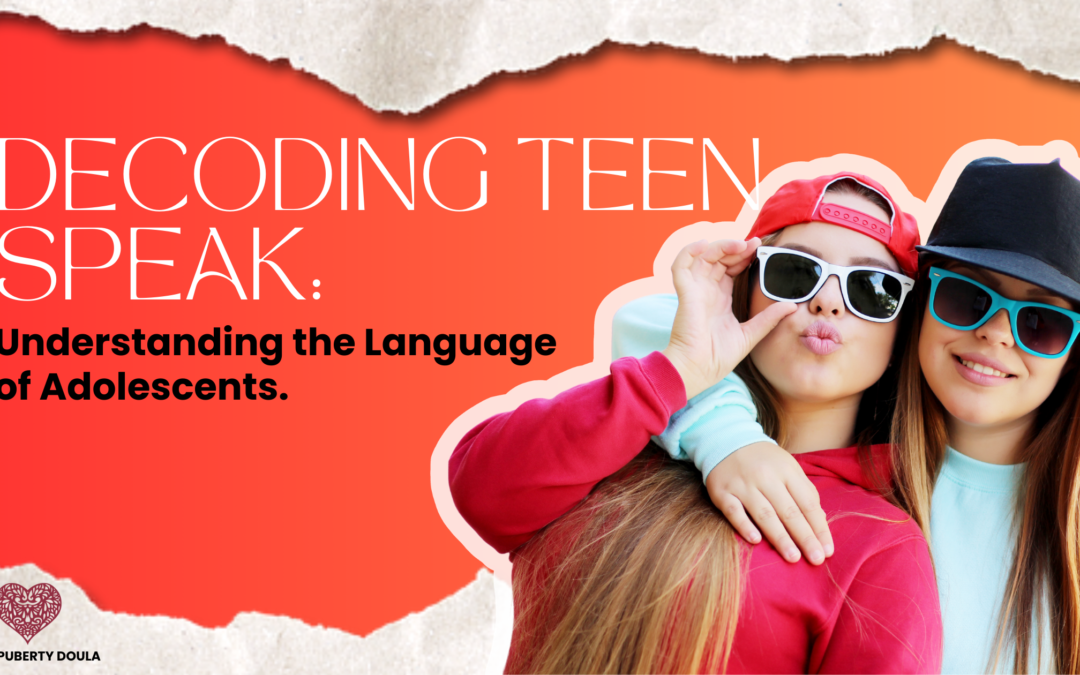Teens always seem to be coming up with new ways to talk, making their world an intriguing landscape to observe. Deciphering this “teen speak” can be challenging for parents, educators, and even peers. Let’s explore the fascinating world of adolescent language, its origins, and provide insights into decoding the cryptic expressions commonly used by today’s teenagers.
The Evolution of Teen Speak
Language is always dynamic and evolving: the language of adolescents is no exception. Teens often create their own slang and expressions as a way to establish identity, belonging, and to differentiate themselves from older generations. They’ve been doing this probably forever. And nowadays social media, popular culture, and technology play significant roles in shaping this ever-evolving lexicon.
Social Media Influence
In the age of smartphones and social media, teens are more connected than ever before. Platforms like Instagram, Snapchat, TikTok, and Twitter provide a virtual space for teens to share their thoughts and experiences. The brevity of these platforms often leads to the creation of abbreviated phrases and acronyms, such as “LOL” (laugh out loud) or “BRB” (be right back), which have become staples of teen speak.
Emojis and Memes
Emojis and memes are essential components of teen communication. These visual elements add layers of expression and nuance to text-based conversations. Emojis, small digital images that convey emotions, help teens express feelings in a more nuanced way than words alone. Memes, humorous images or videos with accompanying text, are widely shared and contribute to the creation of inside jokes within the teenage community. Accept that you just might not “get it”.
Common Teen Speak Phrases
To better understand teen speak, it’s crucial to familiarize yourself with some commonly used phrases and expressions. Here are a few examples:
- “Lit”: Used to describe something exciting, fun, or excellent.
- “Savage”: Refers to someone who is bold, fearless, or unapologetically authentic.
- “FOMO”: Stands for Fear Of Missing Out, expressing the anxiety of missing a social event or experience.
- “Flex”: To show off or boast about one’s achievements, possessions, or abilities.
- “Tea”: Gossip or insider information about someone or something.
Decoding Strategies for Parents and Educators
Understanding teen speak is essential for parents and educators to bridge the communication gap with adolescents. Here are some strategies for decoding the language of teens:
- Stay Informed: Regularly check social media platforms, watch popular shows, and engage with current trends to stay up-to-date with the latest slang and expressions.
- Open Communication: Establish an open and non-judgmental line of communication with teens. Make sure you are laughing with them and not at them. Encourage them to share their experiences and language, and be willing to learn from them.
- Use Teen-Specific Resources: Online dictionaries and resources dedicated to decoding teen slang can be valuable tools for parents and educators. Websites like Urban Dictionary provide definitions for the latest terms.
- Ask Questions: When in doubt, don’t hesitate to ask teens directly about the meaning of a particular phrase or expression. They are often more than willing to share their insights.
- Don’t Change Your Speech: Teens will probably get annoyed if you often try to sound like them.
Decoding teen speak is a continuous process, as slang changes rapidly. Don’t be put off by all the lingo. By staying informed, maintaining open communication, and utilizing available resources, parents and educators can successfully navigate the linguistic landscape of adolescence. Embracing the uniqueness of teen speak fosters better understanding, strengthens relationships, and ensures that adults remain connected with the vibrant world of today’s youth.


Mahalo for info. I always more to learn (64 me, with 28-30 year old adult kids) 😀
You’re welcome! I’m glad you found this article helpful.